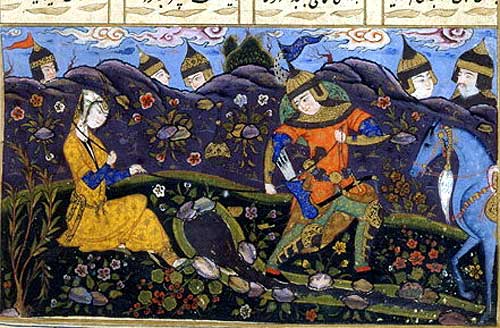|
|
Pictorial Reflection of Woman in Islamic Narration and Shah-nameh
Helena Shin Dashtgol
Reprinted from: Woman & Culture, A Collection of Articles in Commemoration of Margaret Mead’s 100th Birthday, Ney Pub., Tehran, 2003 (A brief of the article) (Permission: Author)
The images of Women, those referred to in Literal and Cultural texts, have a prominent role in the allure of the pictures in Persian literal manuscript.
The forms of these images have been impressed by the literal aesthetic, values and traditions of that society. These pictures can be observed under two categories; those in Islamic cultures and narrations, and the ones in Shah-nameh. In the first category the pictures of Women like Eva, Bilkis, Mary, Zuleikha, the heavenly and the infernal women of Miraj-nameh. These pictures are characterized in accordance with Quranic or religious narrations and have idealistic images based on religious belies.
However, the large amounts of Persian pictures after Islam are related to Ferdowsi’s Shah-nameh. In these pictures the famous and renowned women personifying well being, chastity and courage are illustrated, women like Arnavaz, Shahrnaz, Roudabeh, Tahmineh, Shahrou, Farangiss, Golnar, Nahid, Azadeh, Gourdia, Shirin, Qidafeh. Also to be named in this category is Soudabeh illustrated as an evil woman. The pictures of these manuscripts provide a pictorial history of Iran after Islam that retells the identity and life of women in different historic periods.

|
|

